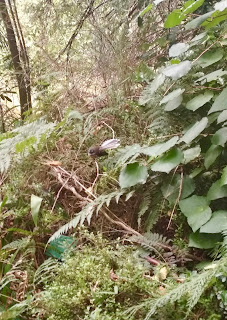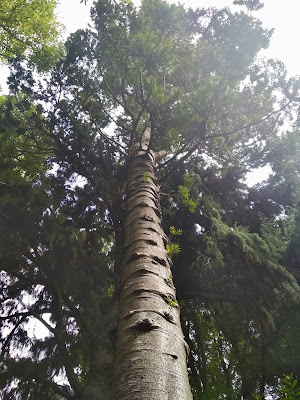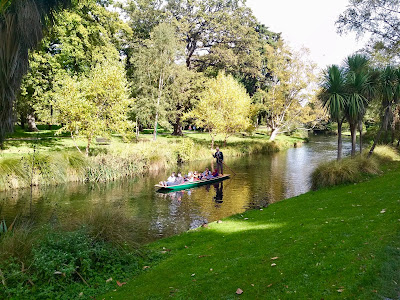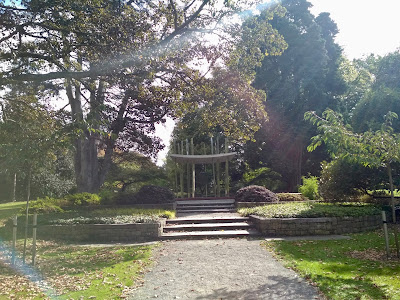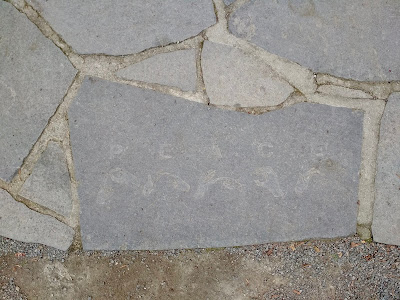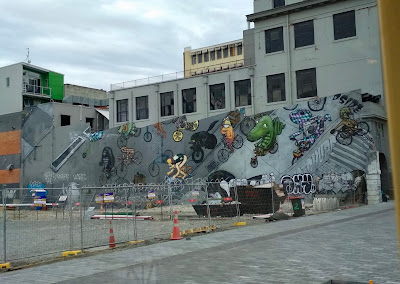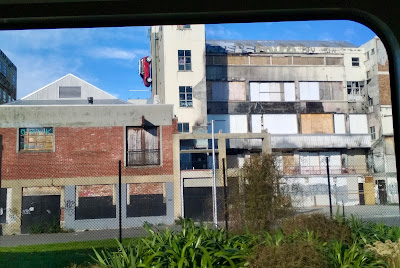I spend a lot of time in the Wellington Botanic Gardens, sometimes exploring them with my children during our weekly excursions there and sometimes strolling around on my lunchbreak, sipping a cup of tea. The Hamilton Gardens are also among my favourite places. So when we went to Christchurch, I was eager to explore their Botanic Gardens, and we were not disappointed. I've probably chosen too many photos, but I just adore them all, so... you get lots.
I don't know what these plants are, but don't they look just like roasted marshmallows on sticks?!

I love it when moss is so thick and consistent that you could believe you're looking at land instead of water.
(Actually when I was in Australia, I believe that Ted the Cavalier King Charles was fooled by just such an illusion, and ended up having a surprise swim.)
We had the most delightful time walking quietly through forested areas and watching the displays of the many Piwakawaka. They are very difficult to photograph, as they are constantly flitting rapidly about, but I managed to get a couple that are at least recognizable, if not clear.
I'm quite proud of the pictures, actually. Two Piwakawaka pictures is the best I've ever done, and both times you can see their beautifully fanned tails. Also, this was the first time I'd heard (or remember hearing) their voices, and they were entertaining, as they sounded like they were scolding us. Which maybe they were.
There were some incredible trees, including this one...
... and this one...
... and this one.
This is probably my favourite picture from the whole trip. I love the colours, and how peaceful it is, and it reminded us both of Japanese gardens, which we love.
This is called the Peacock Fountain, which I read about online, and I was very excited to see it, as I love peacocks. To my disappointment, it is named after a person whose last name is Peacock, and has a grand total of zero actual peacocks on it. However, it is still beautiful, so it's okay.
Should you chose to, while in Christchurch, you can go "punting on the Avon." Punting to me means kicking, and I hadn't realized that it was also the word for a flat bottomed boat, which I would have called a gondola. Then we remembered that they can't call it a gondola in Christchurch, because they have a renowned experience of going up above the city in an aerial lift (or gondola), which is called The Gondola. Having two gondola experiences would be confusing. Anyway, we did neither of these things due to J's motion sickness, but it was lovely to see people drifting by as well strolled around.
This is the Avon River, which runs along the edge of the Botanic Gardens and then through a lot of the town.
This is the approach to the World Peace Bell, and is an appropriately serene setting.
Here is the bell itself, which is quite beautiful, and makes a lovely, resonant noise when you rap on it with you fingers. I found the sound impressively light and beautiful for such a huge, heavy thing.
I know it's hard to see, but this stone says PEACE and then has it spelled out in NZ Sign Language letters. There were stones with the word peace in many, many languages.
I thought it would be better to let it explain itself than to parrot it. Pretty amazing, isn't it?
This is a Rangiora plant, the leaves of which are bright green on one side, and stark white on the other. J taught me that people used to use them as postcards because they worked like paper, and until relatively recently, you could see send them in the mail. They've now stopped that because the machines don't like them, but that's pretty cool! I've started collecting them with my children at our Botanic Gardens, and we're drying them so we can use them for artwork.
This is a Karaka tree, and the plaque below it said, "Often occurring naturally in coastal groves, the karaka is one of the few trees cultivated by Māori. The flesh surrounding the seed is poisonous, so the fruit had to be carefully prepared to remove all traces of the poison."
There were quite a few interesting sculptures there, but due to my continuing fascination with fern fronds and the koru (spiral) shape, this one was my favourite.
J thought these were tulips, and I don't think they are (although I have no more informed guess, either), but we both agreed that they were beautiful.
I think that these are cannas, because they remind me of the flowers Dad used to grow from bulbs. I am much better at appreciating flowers' beauty than at remembering their names, so whatever they are, I loved the vivid orange.
I would have loved to spend even more time exploring these beautiful gardens, but I am still having a lot of pain in my injured knee, and I need to avoid walking for very long. We took some breaks, and then when it was clear that I needed a longer time off my feet, we headed back towards town for lunch. We'll have to come back next time we visit, hopefully with uninjured knees.


